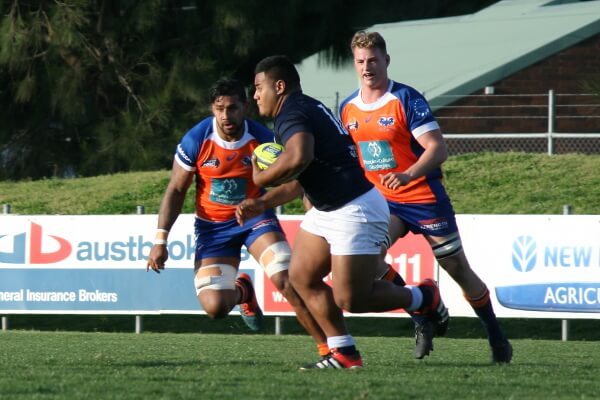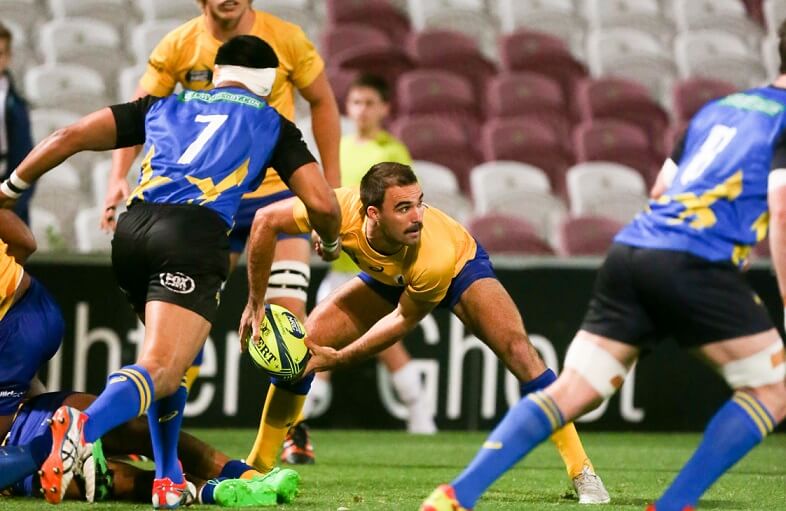This has been an awful year for Australian rugby. The ARU and club rugby have a rocky relationship to say the least. At Super Rugby level, only one Australian team limped into the playoffs by default, with the rest outplayed by our Kiwi counterparts. And that doesn’t even include off-field dramas. Then the Wallabies have come crashing back to earth from a successful Rugby World Cup campaign (despite losing the final), humbled by a well-coached and well-led English side high on confidence from their Six Nations success. All this in among the bad press around players heading to France, ARU mismanagement and lack of depth to field five super rugby teams.
But among all this doom and gloom, on June 29 the draw for the third season of the Buildcorp National Rugby Championship (NRC) was announced. With the Sydney Stars now cut from the competition, eight teams will contest the trophy. But, let’s be brutally honest here. This little competition isn’t exactly turning heads. Even diehard club rugby communities seem to be paying it little attention. Many blame this on the lack of advertising. Maybe it is also because the Shute Shield and the Queensland Premier Rugby competitions are more appealing for long-time fans, who have been following these clubs all their lives.
With the back end of Club Rugby and Super Rugby seasons happening and the forthcoming Rugby Championship and Bledisloe Cup nearly upon us, it’s quite easy for the NRC to be forgotten once again. Well, the buck stops now! Many in Club Rugby need something to make us feel optimistic about the future of rugby in this country. To me, nothing speaks optimism like this plucky little competition, and now that it’s nearly upon us, it’s about time rugby fans gave it the attention it deserves.
And here’s why:
The need for a bridge between amateur and professional
I’m not going to get into the politics of ARU management. The ARU’s job is to ensure the development and management of rugby, be a leader in World Rugby administration, but also be a successful business within in one of the world’s busiest sporting markets, competing with the likes of AFL, rugby league and soccer. However, it’s no secret many in club rugby look upon the governing body (and their recent decisions around grassroots rugby) with disdain.
But with the NRC, we should not be so quick to assume the worst. While fans are entitled to convey our opinion, it would be hypocritical to not give credit where credit is due. People have been crying out for a bridge between amateur and professional levels of rugby for years, and the fact that the ARU even attempted to create one should be applauded (given recent financial woes, and that the Australian Rugby Championship (ARC) back in 2007 lost the ARU nearly $5 million). What should also be applauded is that their ‘financially sustainable’ model made the competition break even in 2014, despite attracting less than 80,000 in attendance all season.
This is a competition Australian rugby needs. Many players have commented that the NRC has done much to improve the quality of club rugby overall, given the exposure that many club rugby players have had playing against, and alongside, Super Rugby players. And the rise of players like Samu Kerevi from complete unknown in 2014 to a standout performer at the Reds and Wallaby debutant in 2016 really has come off the back of this competition. But this isn’t a one off example, so far there have been 45 NRC players who have gone on to make their Super Rugby debut – that’s in just two years!

Quality of Product
Again, credit where credit is due. The ARU listened to fans and changed rules, which has resulted in a faster flowing game. Gone are the days when we watched players kick field goal after field goal. As fans, that is not what we want. Aside from winning, what we want to see is tries! The NRC averages over nine tries every game, and if you get the chance to look on websites like YouTube, some of them are absolute screamers.
Many people have complained that sides like Brisbane City (full of Super Rugby talent) unevenly distribute the levels of talent when compared with club-based teams like the North Harbour Rays (now Sydney Rays). However, this year will be different for two major reasons; being that three NSW teams exist instead of four, and that a lot of players (especially for Brisbane City) will probably be called up to the Rugby Championship. This suggests we are in for a high quality, and more balanced season.
The Players
Back in 2007, the ARC was advertised with players talking about how we may not know their names now, but that one day we will – and we know them. In among those players in that advertisement were Dave Dennis, Dean Mumm, Luke Burgess, Kurtley Beale, and even David Pocock. The NRC showcases what we have to look forward to in terms of future greats of the game. Almost 50 players taking the step up from NRC to Super Rugby is a great example of this, let alone the likes of Joe Powell and Reece Hodge who would go on to train with the Wallabies as well. The NRC is showing what club rugby players (and coaches) have to offer.
In what has been a rough year for Australian Super Rugby teams, it is these NRC players that are standing out. Samu Kerevi, while having a mixed performance during the England series, has been stellar for the Reds. Andrew Kellaway has emerged as a fantastic fullback for the Waratahs. Even the Force, which has frequently been criticised for its lack of home-grown talent, have produced astounding players in the form of Dayne Haylett-Petty, Luke Burton and Kyle Godwin. NRC players have emerged as the best performers for every single Australian Super Rugby team, and even in overseas teams (such as Michael Alaalatoa for the Crusaders).
In addition, a further sign of NRC talent was shown last year when the Australian Barbarians (comprised of non-Super Rugby contracted NRC players) toured New Zealand with a clean sweep of the NZ Heartland XV (a team picked from the best non-professional kiwi players). How often do we clean sweep a series in New Zealand? Have the Wallabies even done that?
It needs a following!

The one thing that is so great about club rugby competitions like the Shute Shield and the Queensland Premier Rugby is the history. The rivalries lasting over a century, some even more. The fans who have supported these clubs their entire lives. The venues. The setting. The beers afterwards.
The NRC has a long, long way to go to even come close to emulating the rich history and culture of competitions like that, but even after two seasons, it has proven itself to be robust and versatile. Now it’s time for it to come of age. What it needs now is for people to get behind it. The success of clubs comes down, not to profit, but to the fans who get behind them. If you don’t get bums on seats, the competition cannot function. That is how much power fans have.
For example, Cricket Australia took a big risk when they launched the Big Bash League five years ago. Yet, with clever advertising at the cricketing fan base (coupled with strong word-of-mouth), the BBL now averages close to 30,000 spectators a game (by comparison, the NRC averaged 1450 a game last year).
It is possible to be a fan of club rugby as well as this competition. We have to go to games, support teams, and tell other people about this. Because this competition IS our future. These players in the NRC will go on to make their own history in the gold jersey. They already are.
Now, of course nothing will change overnight. We have supported this great game all our lives. It has delivered some of our best (and worst) memories. It’s a part of who we are. Our Super Rugby teams and our national team haven’t performed. So, if there is anything to get you reinvigorated in Australian rugby, then this competition surely is it. It’s time for us to get behind the NRC.

